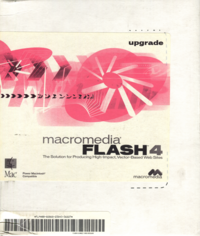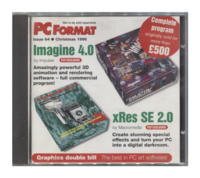Macromedia Inc.
| Home > Browse Our Collection > Computing Companies > Macromedia Inc. |
Macromedia, Inc., was an American graphics, multimedia, and web development software company (1992–2005) with headquarters in San Francisco. It was formed from the merger of Authorware Inc. and MacroMind–Paracomp with Bud Colligan as CEO. The original products were: Authorware, an interpreted, flowchart-based, graphical programming language used for creating interactive programs that can integrate a range of multimedia content, particularly e-learning applications. The flowchart model differentiated Authorware from competitive products such as Adobe Flash and Adobe Director, which rely on a visual stage, time-line and script structure. Director originating from Macromind was a multimedia application published by Macromedia then by Adobe . Director applications are authored on a timeline, similar to Adobe Flash, and support graphical primitives and playback controls such as video and Flash players. It uses a graphical user interface (GUI) and includes a scripting language called Lingo, and plug-in applications called Xtras, similar to ActiveX and supports many different images, audio, and video formats. Director became Macromedia's flagship product until the mid 1990s. In January 1995, Macromedia acquired Altsys Corporation after Adobe Systems announced a merger with Altsys' business partner, the Aldus Corporation. Altsys was the developer of the vector-drawing program FreeHand, which had been licensed by Aldus for marketing and sales. Because of the similarities with Adobe Illustrator, the Federal Trade Commission issued a complaint in October 1994 ordering a divestiture of FreeHand back to Altsys and thence to Macromedia. FreeHand expanded Macromedia’s multimedia graphics product s to include illustration and design graphics software and FreeHand's vector graphics rendering engine and other software components would prove useful to Macromedia in the development of Fireworks. Fireworks was made for web designers for rapidly creating website prototypes and application interfaces. Its features included slices, which are segments of an image that are converted to HTML elements, and the ability to add hotspots, which are segments of an image that are converted to hyperlinks. In March 1996, Macromedia acquired iBand Software, makers of the Backstage HTML authoring tool and application server. Macromedia developed a new HTML authoring tool, Dreamweaver, around portions of the Backstage codebase and released the first version in 1997 including its "Roundtrip HTML" feature, which attempted to preserve the fidelity of hand-edited source code during visual edits, allowing users to work back and forth between visual and code editing. Dreamweaver became widely adopted among professional web authors, though many still preferred to hand-code, and Microsoft FrontPage remained a strong competitor among amateur and business users. In November 1996 Macromedia acquired FutureWave Software, developers of FutureSplash Animator, an animation tool especially for pen-based controls and with a small Viewer application for download over the then slow Internet. It was renamed Macromedia Flash, and as with Netscape, the Flash Player became a free browser plugin to gain market share. In 2005, more computers worldwide had the Flash Player installed than any other Web media format, including Java, QuickTime, RealNetworks, and Windows Media Player. Macromedia's strategy shifted from marketing it as a graphics and media tool to promoting it as a Web application platform with a small footprint. In December 1999, Macromedia acquired traffic analysis software company Andromedia Corporation. In 2001 Macromedia acquired Web development company Allaire founded by Jeremy and JJ Allaire in 1995 in Minnesota then later headquartered Massachusetts. Allaire released the first version of the ColdFusion server in 1995, the first database-driven web-content server. The language for ColdFusion, originally Database Markup Language (DBML), was changed to ColdFusion Markup Language (CFML). Allaire also produced two web design Integrated Development Environments (IDEs): HomeSite, purchased from Bradbury Software, and ColdFusion Studio, based on HomeSite with enhancements for ColdFusion. In 2000, Allaire had acquired Live Software, founded by Paul Colton in 1997 and best known for the creation of the first commercial Java Servlet and JSP server, JRun. Later in 2000, Allaire also acquired the Kawa IDE (Java IDE) and most of its development team from Tek-Tools Software. Allaire also produced an early web Content Management System (CMS) called Spectra. So by 2001, Macromedia had added several popular servers and Web developments tools to its portfolio, including ColdFusion, a web application server based on the CFML language, JRun, a Java EE (enterprise edition) application server, and HomeSite, an HTML code editor that was also bundled with Dreamweaver. In 2003, Macromedia acquired the web conferencing company Presedia and continued to develop and enhance their Flash-based online collaboration and presentation product offering under the brand Breeze. Later that year, Macromedia also acquired help authoring software company eHelp Corporation, whose products included RoboHelp and RoboDemo (now Adobe Captivate). Macromedia was purchased by its rival Adobe Inc. on December 3, 2005 in a share swap of approximately $3.4 billion. Adobe integrated Macromedia’s operations, networks, and customer care organisations shortly thereafter. At the time of Adobe’s acquisition of Macromedia, its software portfolio included:
Software Products
Magazine Articles About Macromedia
|
People Related to Macromedia :
|

















